

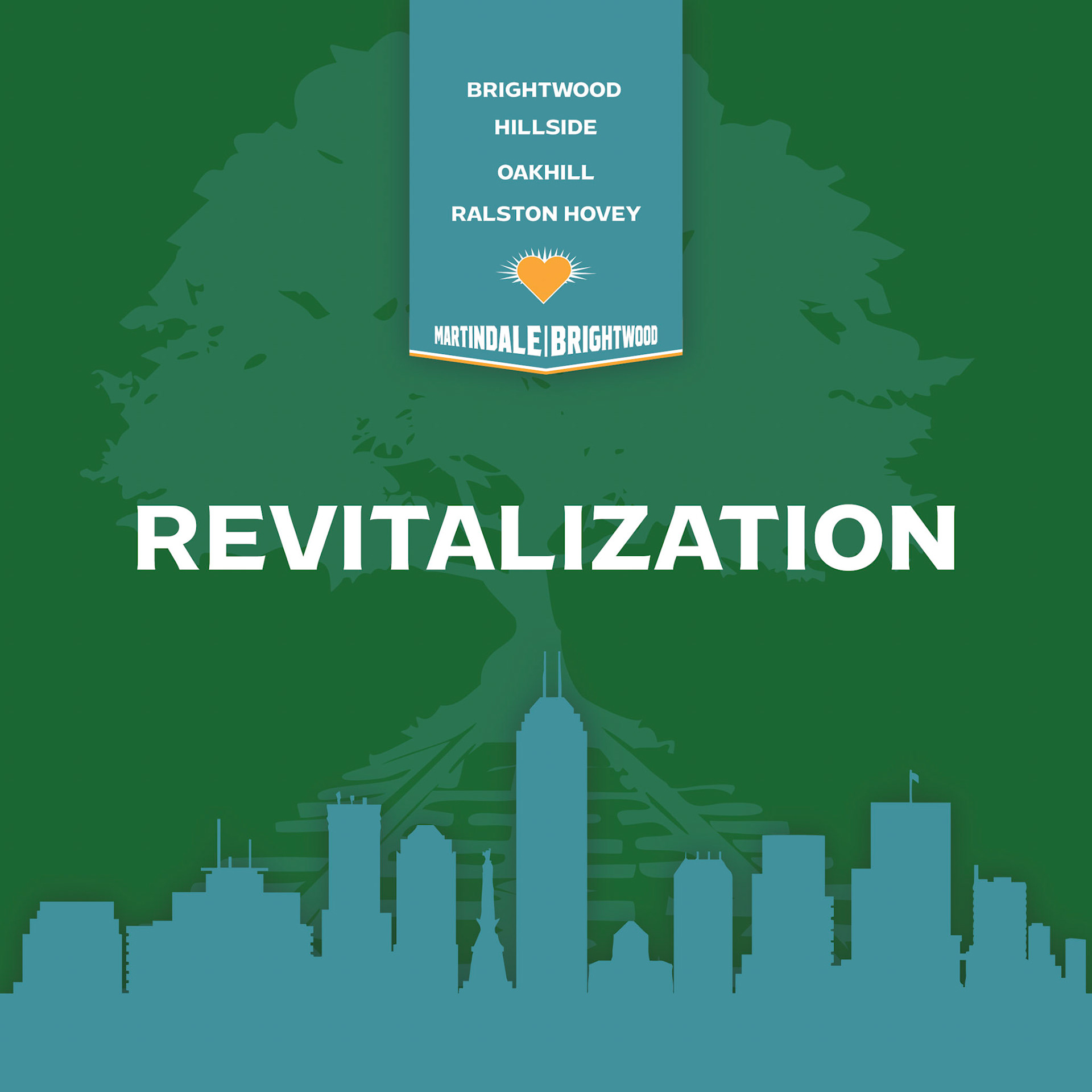
A Commitment to the Future of Martindale Brightwood
The Martindale Brightwood neighborhood, located in the near Eastside of Indianapolis, is an area of great historical significance and pride, for the African American community of Indianapolis and particularly for the people who live in this neighborhood. For more than 150 years, the neighbors of Martindale Brightwood have worked together to build a resilient, supportive community. Neighbors have faced many challenges, yet the events that converged in 2020 raised those challenges to new levels.
The following Quality of Life Plan was created in response to several critical factors the neighborhood experienced beginning in 2020. During a year of unprecedented uncertainty, the ravages of the COVID-19 pandemic and a nation in racial turmoil, motivated neighborhood residents and stakeholders to collectively renew their commitment to determine the neighborhood’s future. The resident led congress, One Voice Martindale Brightwood, representing the neighborhood associations of Oakhill, Hillside, Ralston Hovey and Brightwood Concerned Citizens, determined to launch a renewed Quality of Life plan, one that would move forward through these crises. One Voice aligned with MOVE-MB, the coalition of neighborhood-based institutions that provide neighbors access to resources and support.
With momentum in place in a time of crisis, the collective redoubled its commitment to continued alignment and articulated its vision in this statement, published in the Indianapolis Recorder in November 2020:
Statement of Community Justice
Originally Published In The Indianapolis Recorder November 13, 2020
For too long, the Martindale Brightwood community has been stigmatized and dissected as an area marked by disproportionately adverse statistics. While the challenges we face from an unrelenting pandemic and systemic racism are real, our community stands tall, resilient, and impatient to welcome in an era that harkens back to our community’s best days.
Over the past several months, Martindale Brightwood residents and neighborhood organizations have navigated the unprecedented trials of COVID-19, while acknowledging the generations of systemic racism and police violence that has wreaked greater havoc on our neighborhood. We’ve lost too many of our sons and daughters to senseless violence, too many of our seniors and residents to needless effects of lack of access, made possible by institutions that have written too many of our people off as second class.
But if adversity reveals true character, we stand tall knowing the true character of our neighborhood is one of resiliency, creating beauty from the chaos that has befallen this great neighborhood, much of which is beyond its stakeholders’ control.
The unrest our nation is encountering has only strengthened our collective resolve to transform our community in a manner where our assets are not only maintained but grow from within. No longer will we fall victim to silos, selfishness, or self-serving initiatives or actions that take away from the empowerment of the whole.
Martindale Brightwood stands positioned for a new tomorrow on the shoulders of long-time residents committed to ensuring their community becomes a thriving epicenter of empowerment, focusing first and foremost on our most underserved residents. We are fortified by churches, schools, and neighborhood organizations committed to expediting that return to greatness through faith, high quality, and commitment to our community. We are unashamedly and predominantly Black, and proudly support, promote and work toward efforts to build diversity from within from that foundation. We are further vociferous in our advocacy against those who would threaten the future that we envision for our children and future generations.
We are rich in talent, both from our most revered seniors who have paved the way for a new tomorrow and in our youth, who will soon lead the path we set today. We are diverse in thought and experience, but monolithic in our contention that our neighborhood is destined for the greatness generations before us envisioned.
As our revival continues, we are richer in transformative development and amenities that will prepare our community residents to assume their rightful places as critical contributors to our city, state and nation.
The residents and neighborhood-based organizations that represent this strong coalition welcome all who commit to this transformation in support of our vision. But to be clear, Martindale Brightwood embraces and owns its future, and we will not relinquish that responsibility.
We will demonstrate coalition and resolve through continued development of our neighborhood assets, as will be made obvious by the strengthening of our schools, the active participation of residents in community beautification and the advocacy of neighborhood and city strategies that engender the vision of community we deserve.
We are rooted in our faith that this community’s most challenging days lie behind us, but through faith and work, the transformation that is underway will be accelerated with fidelity to our quality-of-life plan.
Most importantly, we celebrate our transformation through collective impact, knowing that one stakeholder, organization, church or amenity is no more or less important than the other, and all have an accountable role to play in leading our renaissance. As a result, Martindale Brightwood is not only fierce in its strive for positive change but also territorial in that we know the assets are here to drive that change.
Today, the many stakeholders representing this renewed coalition are demanding this neighborhood’s rightful place as the makers of our destiny. We welcome all those with a vested interest to support and participate but are asking no one’s permission. Frankly, our transformation will not happen to us, but will happen by us.
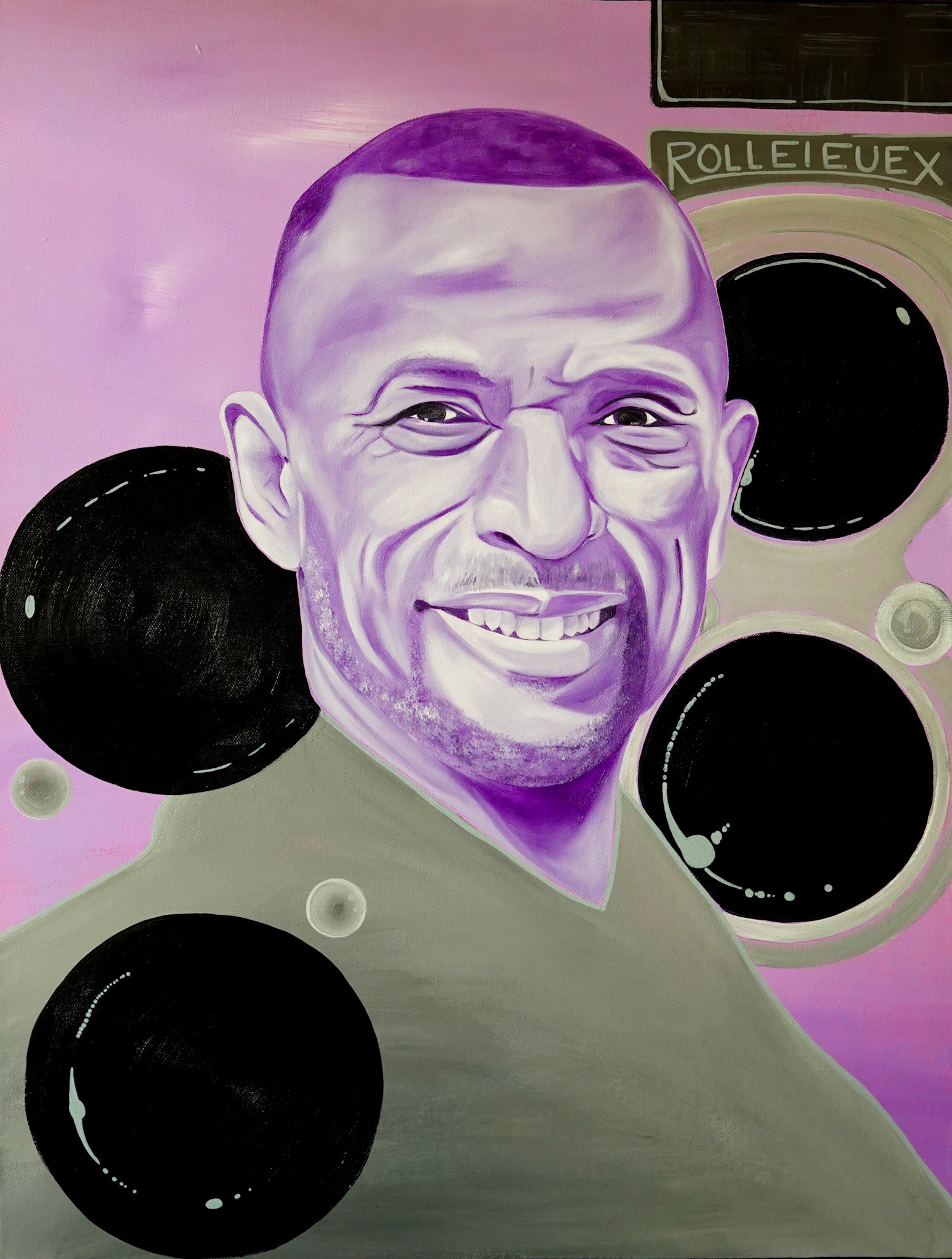

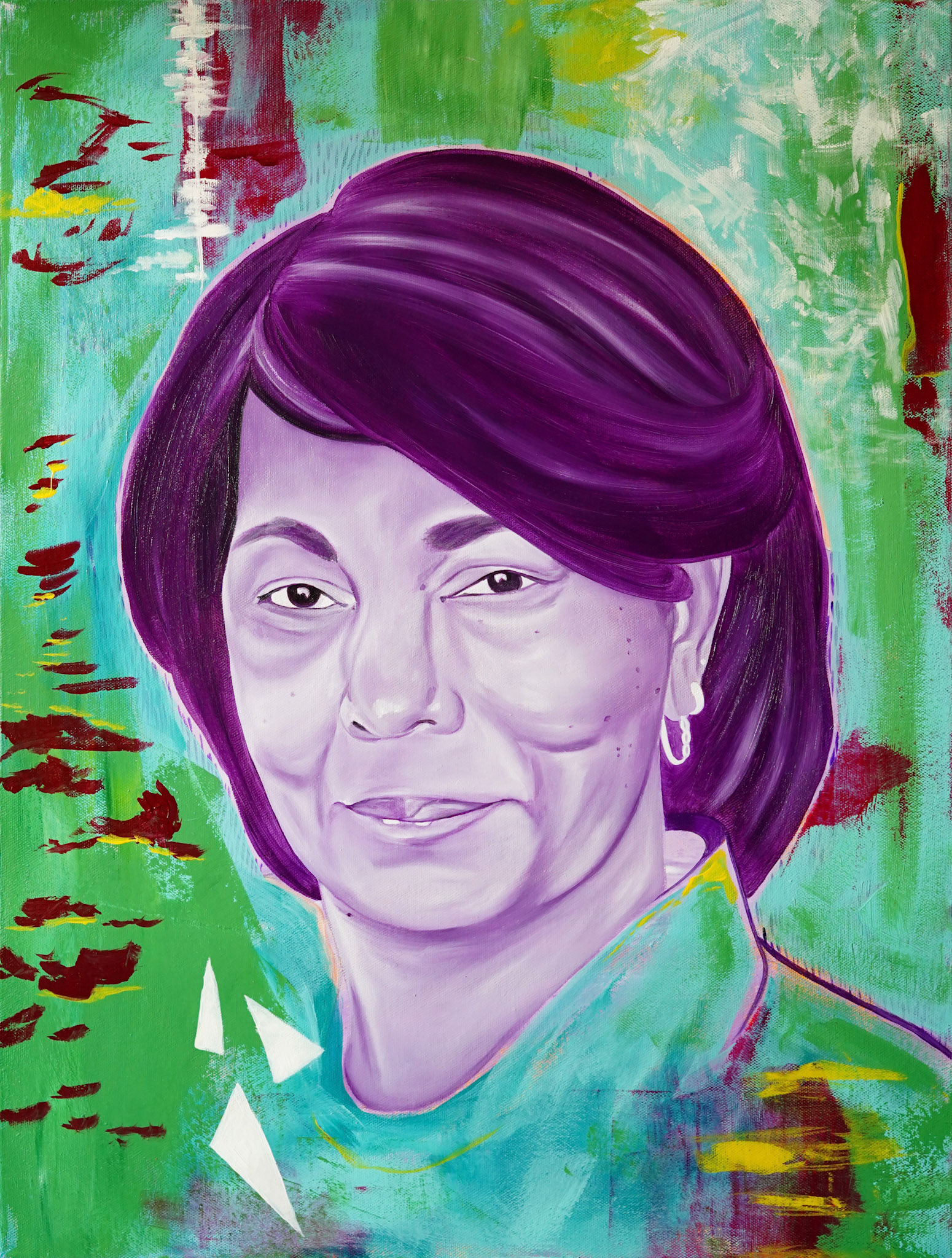
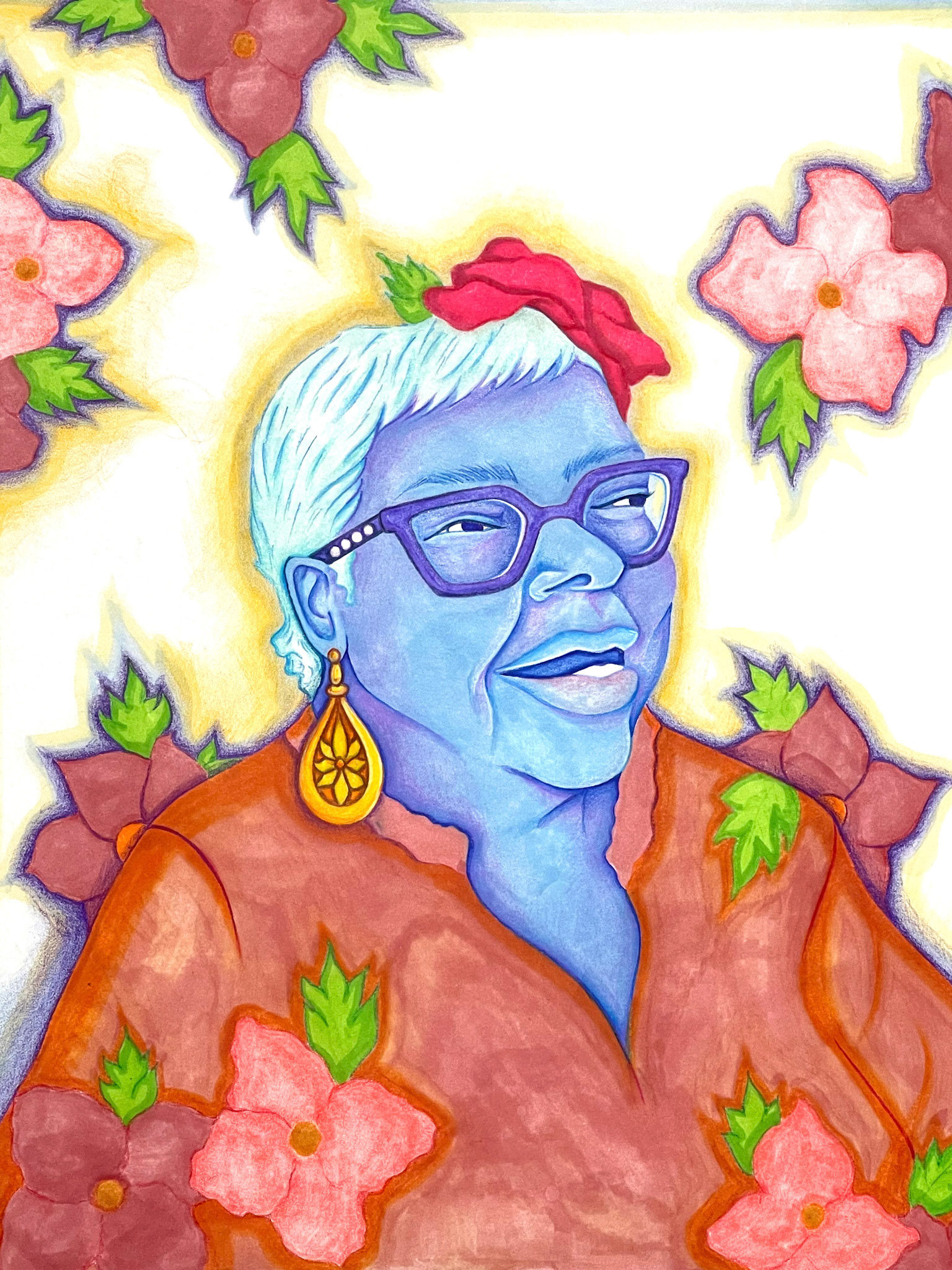
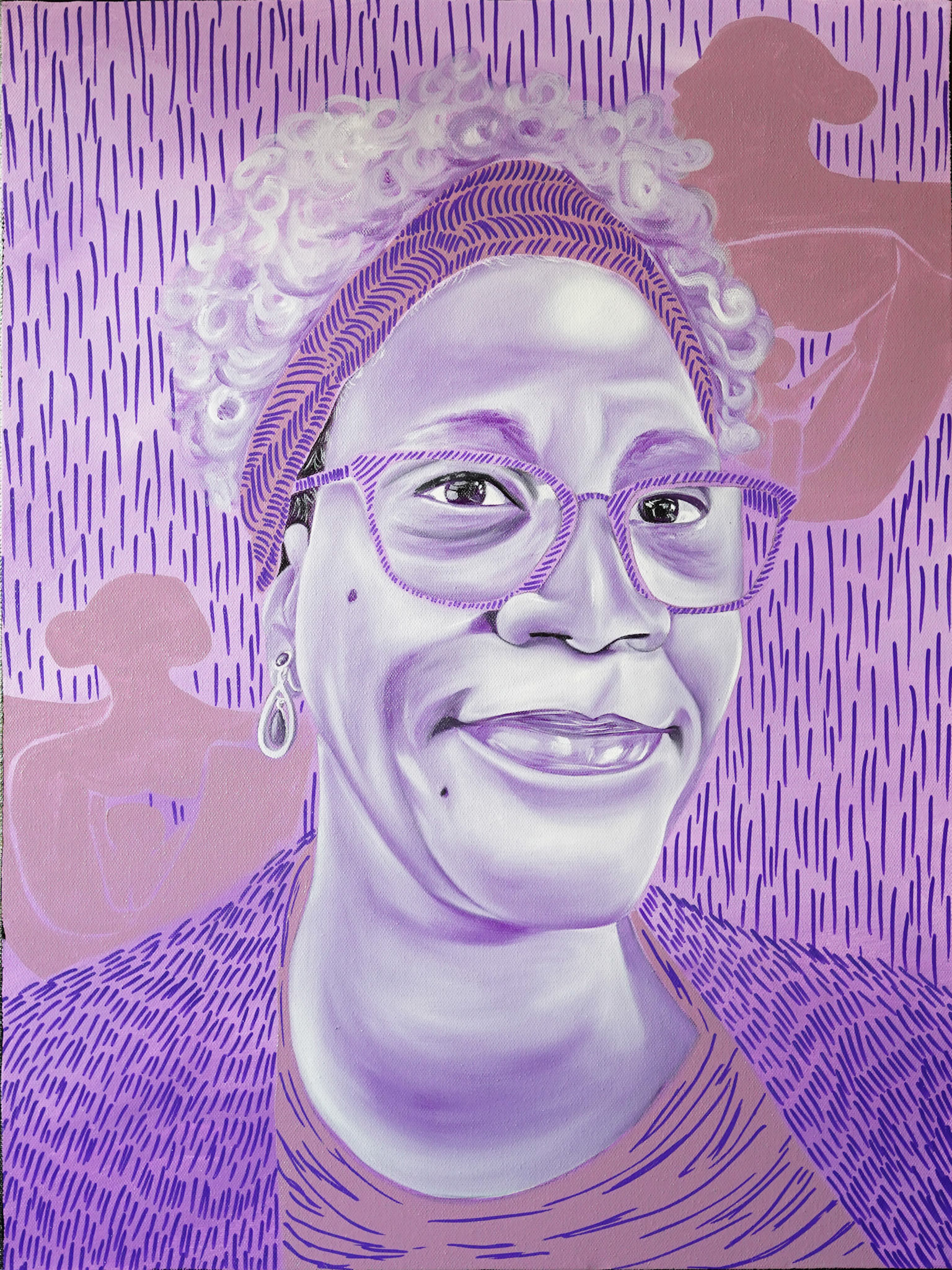
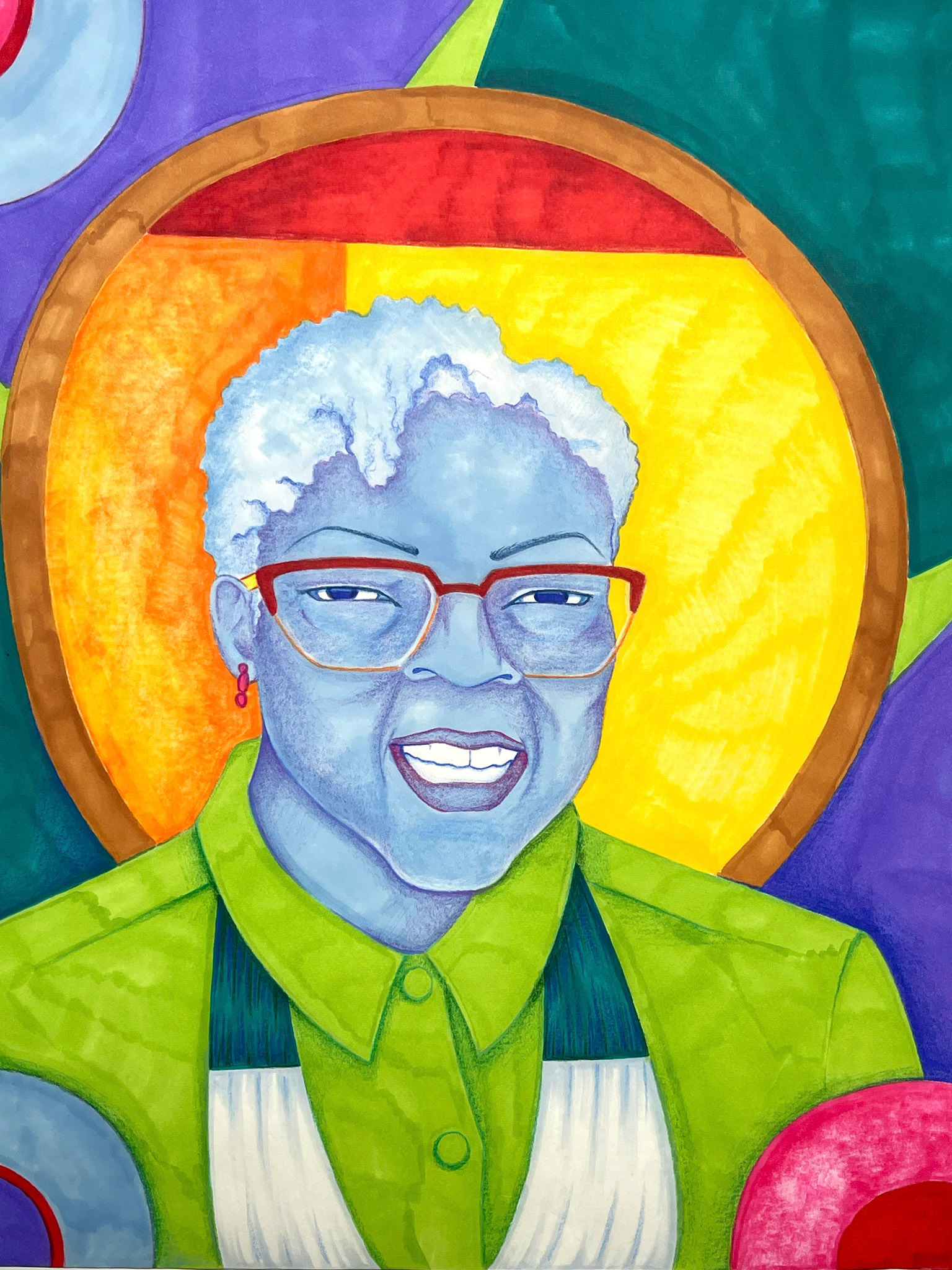


The Harrison Center's Greatriarch project shares stories of residents and stakeholders who have served as advisors to the work and connections of the Martindale Brightwood community. For more information, please visit https://www.harrisoncenter.org/greatriarchs.
Martindale Brightwood: A Brief History
First established in the 1870s with the construction of railroads in the area, the neighborhoods of Brightwood and Martindale provided homes for workers in the railways and the factories that were located adjacent to the lines. Immigrants settled on the Hill in Brightwood while the Martindale neighborhood, known locally as the Bottoms, attracted African Americans, including porters on the railroads. For generations, residents worked and raised families in the neighborhoods. As Martindale and Brightwood moved into the early 20th century, these communities became increasingly vibrant particularly along Station Street and Martindale Avenue, with stores, churches, and schools arising to serve residents. Even as Indianapolis became increasingly segregated, Martindale emerged as a center for the African American community, boasting a roller skating rink, movie theater, Frederick Douglass Park, and other amenities appealing to Black residents of the city.
After World War II, the neighborhood saw a transition marked especially by interstate highway construction that displaced thousands of residents, while other families moved to new Indianapolis suburbs. Racial segregation in housing and education challenged the community and systemic racism limited opportunities for Black residents of Martindale Brightwood.
Yet, the people of the community made institutions like Hazel Hart Hendricks School 37 and Francis W Parker School 56 their own expressions of hope for the future of Black children in a strong, supportive Black community. Martin University, a predominantly Black institution, was founded by Father Boniface Hardin in 1977. Churches provided centers for faith and also platforms for social justice. For instance, at St. John’s MB Church, Dr. Andrew J. Brown hosted the organization of Indiana’s branch of the Southern Christian Leadership Conference, making Martindale Brightwood a center for the state’s civil rights movement.
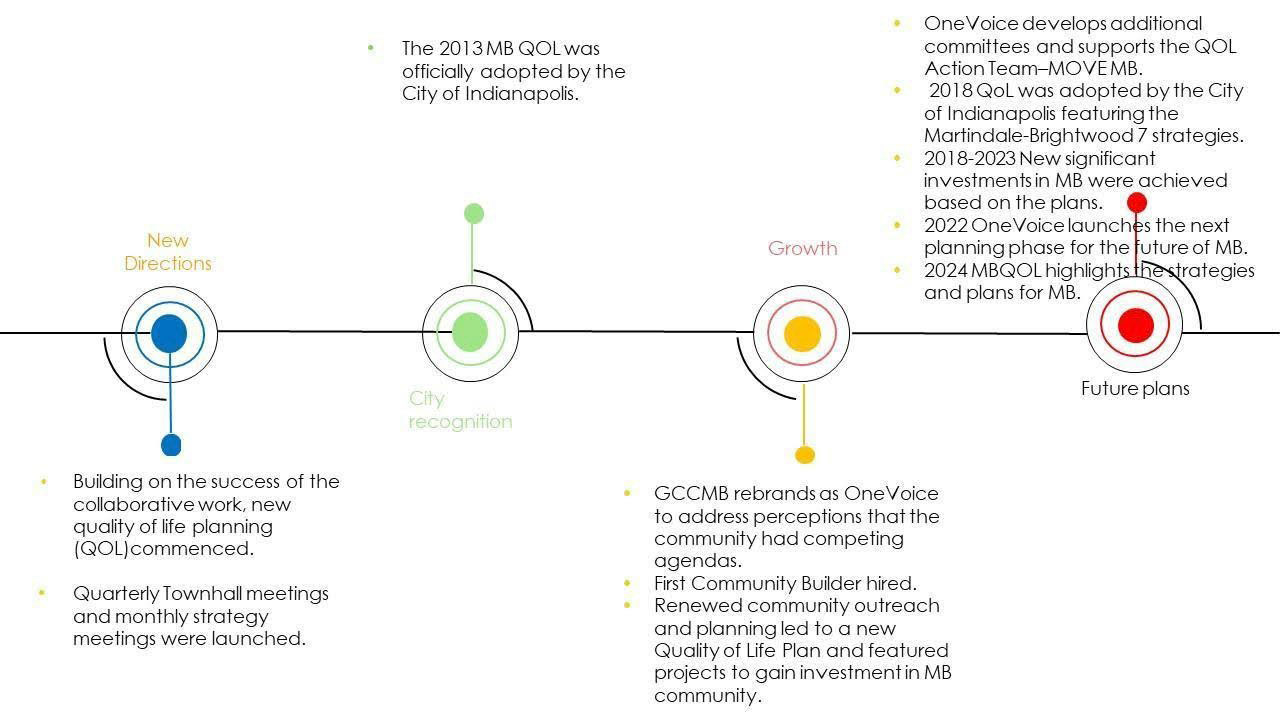
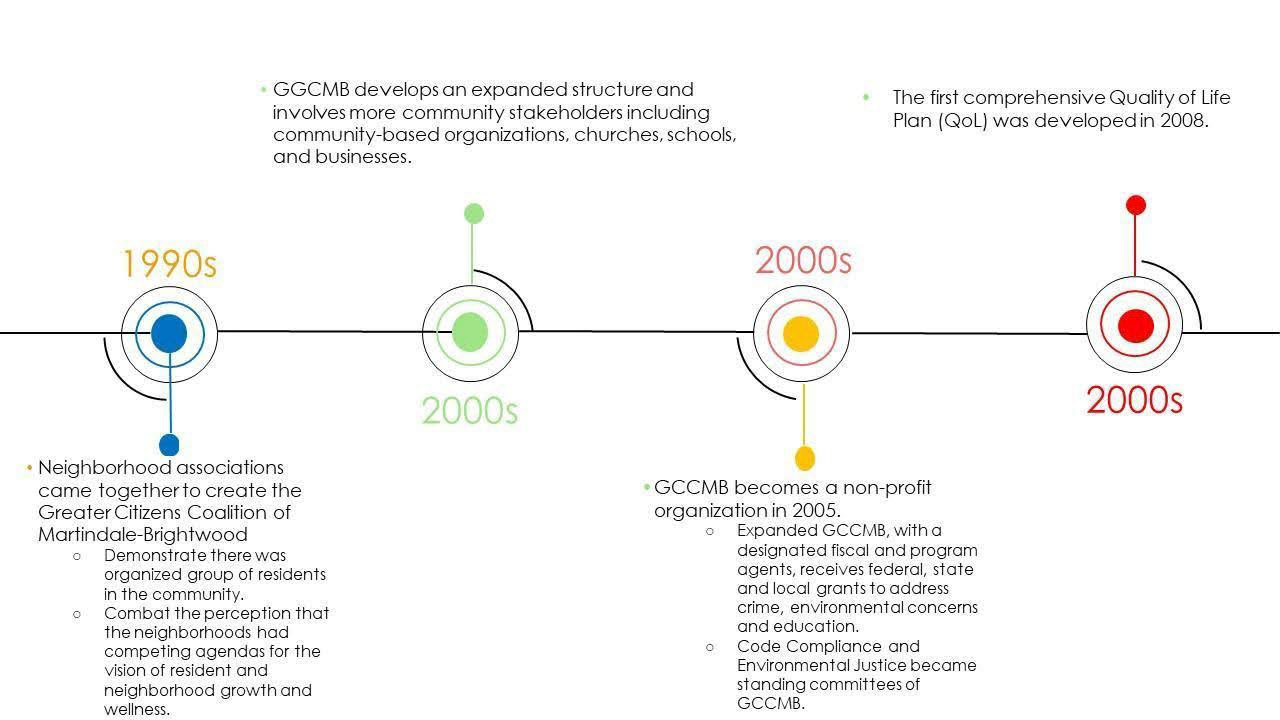
One Voice Martindale Brightwood and Neighborhood Associations
The four associations that represent the neighborhoods of Martindale Brightwood date back at least to the 1960s, when neighbors in Hillside, Oak Hill, Ralston Hovey Arsenal, and Brightwood Concerned Citizens began organizing to take on challenges. Later the community formed the umbrella neighborhood organization now known as One Voice Martindale Brightwood (OVMB) to coordinate across the neighborhoods and present a unified front in taking action.
More recently, advocacy organizations like the Martindale Brightwood Environmental Justice Collaborative and the Martindale Brightwood Code Compliance Committee have united to overcome specific challenges of environmental and housing quality. Residents in these associations are supported by stakeholders in several non-profit organizations working together in the MOVE MB Coalition. (For contact information on the associations and organizations leading change in Martindale Brightwood, please see the appendix to this Plan document.)
In the history of neighborhood advocacy and activism, many Greatriarchs have risen to leadership in Martindale Brightwood. A rich tradition of neighborhood leadership represented by people like Juanita Smith, Shirley Webster, Peggy Storey, Linda Minter, Frankie Cissel, Pat Ladd, and many, many others is carried on by a new generation of leaders who contributed to the creation of this Quality of Life Plan. But all of the leaders from the Martindale Brightwood understood that their mission was to represent the community as a whole, that their individual voices were powered by the collective voices of all of the neighbors in the community.
United and working collectively, residents and stakeholders of Martindale Brightwood have made significant accomplishments, through the implementation of four Quality of Life Plans since 2004.
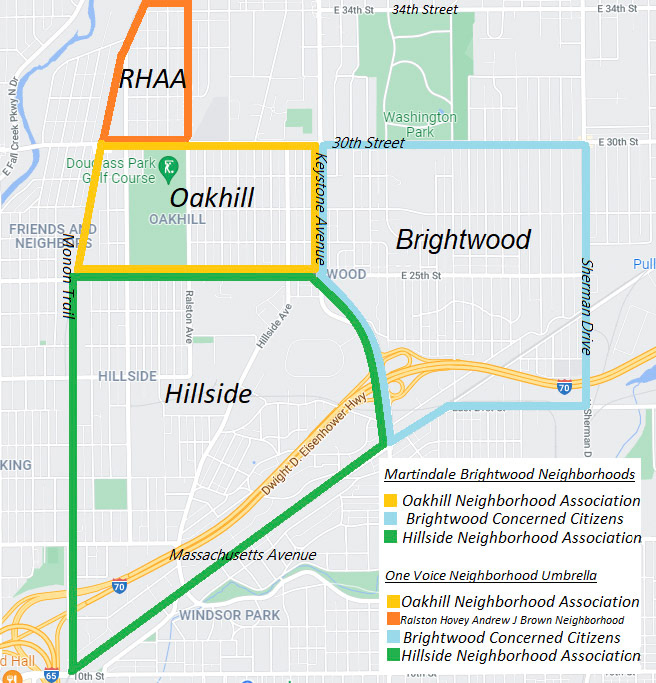
Quality of Life Plans in Martindale Brightwood from 2000 to 2024
In the early 2000’s neighborhoods of Indianapolis took a deep dive into the intricacies and uniqueness of their respective communities. Two neighborhoods of Indianapolis; Martindale Brightwood being one in particular, drew the attention of a major foundation. The Annie E Casey Foundation decided to invest in the forward movement resident engagement of our community from 2000 through 2010.
With this burst of support residents of Martindale Brightwood felt a resurgence of community pride and preservation. Towards the end of this decade, the City of Indianapolis decided to invest funds into neighborhoods through LISC Indianapolis. An initiative was born to facilitate the distribution of these funds called the Great Indianapolis Neighborhoods Initiative, commonly referred to as GINI.
After such strong support from the Annie E Casey Foundation, resident leaders and community-based organizations came together to apply for GINI funds. Unfortunately, the community was denied access to these funds because of long term carry over stereotypes and city wide unfamiliarity of Martindale Brightwood strengths and sustainability. This lack of acknowledgement struck the core of community leaders and ignited a fire to create an infrastructure addressing Martindale Brightwood’s top focus areas including strategies and action steps. In prior years this had been called a Neighborhood Plan. However, a new term had evolved and the infrastructure platform for neighborhood goal attainment was called a Quality of Life Plan.
Through subsequent efforts from the Annie E. Casey foundation and their staff, a Martindale Brightwood Quality of Life Plan was developed with much input and dedication from the community. This plan was presented to the city at a second RFP for GINI funding. This time the City responded that they had divided the City into four quadrants and Martindale Brightwood will be a part of the Northeast Quality of Life Planning Process. With the best interest of the beloved Martindale Brightwood community and recognizing the potentially added value of a Quality of Life Plan, residents and community stakeholders gathered at the Indiana State Fairgrounds working alongside Forest Manor, Devington, Millersville/Binford to develop the Northeast Quality of Life Plan.
This engagement yielded little progress for Martindale Brightwood. So again, community based organizations came together to strategize on the appropriate approach to gain the much deserved attention and funding for this community. The organizations were Martindale Brightwood Community Development Corporation, Oasis of Hope Development Corporation Brightwood Community Center and Edna Martin Christian Center. Stop the Violence was later added. These organizations committed to identifying neighborhood grants and pursuing them on behalf of Martindale Brightwood. Additionally, any available resources such as finances, staff time allocation facility usage or political connections were to be strategically applied to the advancement of Martindale Brightwood, These committed organizations became known as MOVE; a collaborative network utilizing resources to move the community of Martindale Brightwood forward. It was through this endeavor that residents and community leaders and organizations decided to come together and strengthen the Greater Indianapolis Citizens Coalition of Martindale Brightwood. GCCMB so that residents' input could be documented and delivered to those who understood community development engagement commitment and sustainability. The GCCMB even decided to legally do business as ONE VOICE of Martindale Brightwood. So that all would understand the historic perspective of this community who has fought against many obstacles and systemic oppressions. Many neighborhood association meetings, town hall meetings, strategic planning sessions, subcommittee group meetings, zoom meetings, one on one meetings, front porch conversations, surveys, telephone calls and prayer meetings have been held to identify focus areas, partner organizations, action steps, timelines and measurable objectives.
There have been approximately five (5) updates to this document. Spanning time from 2005 to 2023 giving each living document an average life span of 3 years.
I have written this history to the best of my knowledge and there were moments when I shed a tear in remembering the soldiers of this community in which we stand on their shoulders, moments when I became angry at the injustices constantly placed upon this community as an albatross of hindrance.
BUT, TODAY WE MAKE HISTORY AGAIN AND IT IS ALIVE AND WELL IN EACH OF US AS WE PRESS TOWARD THE MARK FOR THE PRIZE OF THE HIGH CALLING OF GOD IN CHRIST JESUS!
– Gina Lewis Alexander, Oasis Christian Community Development Corporation